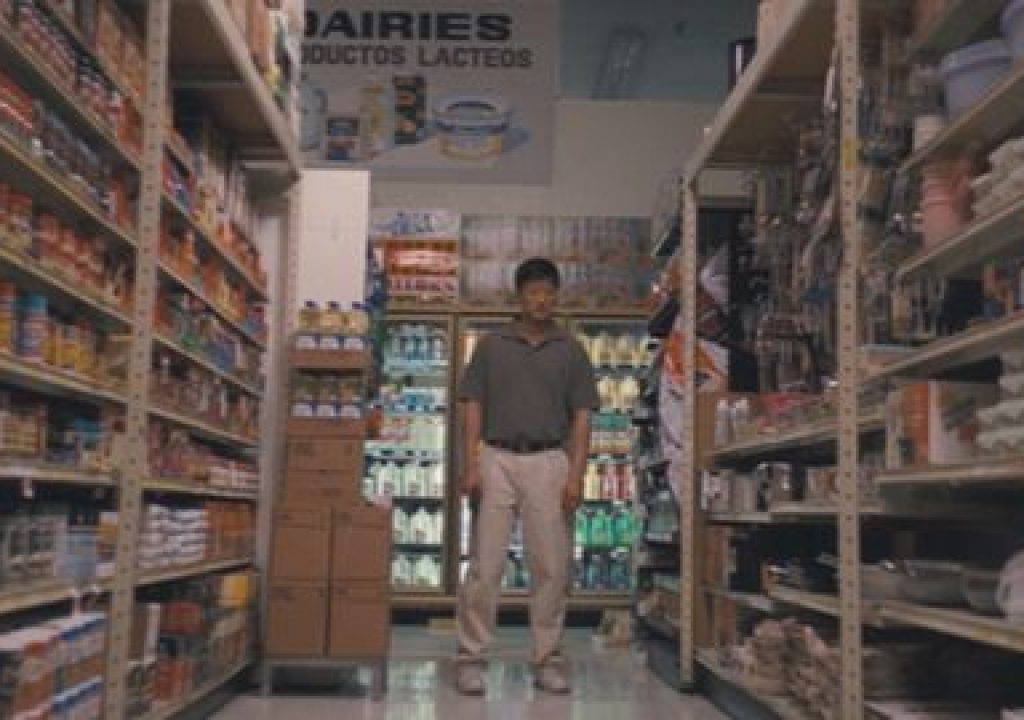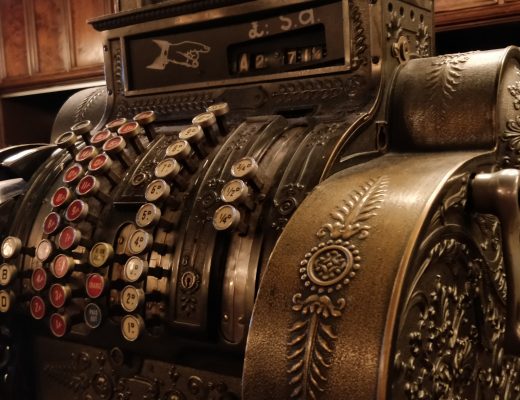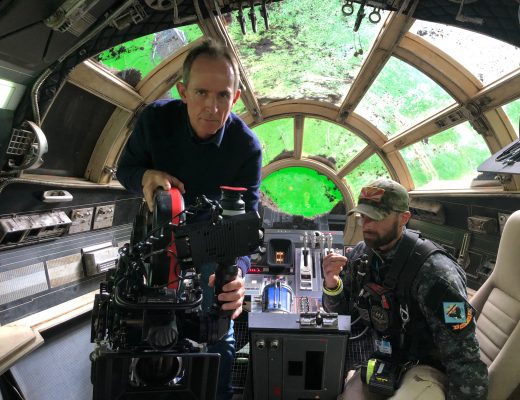One of the questions that came up during our film vs. video roundtable was around whether or not young filmmakers think about film at all, or if they have completely and totally embraced digital. Adam Wilt mentioned that they sometimes do, and the mentality around that approach seems especially relevant to highlight since these are filmmakers who are choosing to go from digital to film, as opposed to the film to digital path that all working professionals were forced to work through in one way or another.
An ongoing Kickstarter campaign showcased a similar example of young filmmakers figuring out how to make film work for them even though the vast majority of their experience was with digital. It seemed like a unique opportunity to find out more about this approach and mentality, and they laid out the details surrounding why they chose film, what sort of expectations they had going into the project and plenty more. Their project, April’s Way, has already been shot, but they’re hoping the Kickstarter campaign will allow them to raise the funds to complete the post work on their project.
It’s eye-opening to see these filmmakers refer to film as archaic and what happens when they’re suddenly forced to deal with limitations like not being able to shoot absolutely everything. Coupled with regular production woes and happenstance, working through these issues showed them a side of production they had never seen before. As with all filmmaking and creative endeavors though, perspective is key.
April’s Way producer Matt Hardman shared his insighs below, which he put together with the help of writer, director and producer Robert Nyerges. Bios for each of them along with DP Nicholas Wiesnet are available at the bottom of the article.
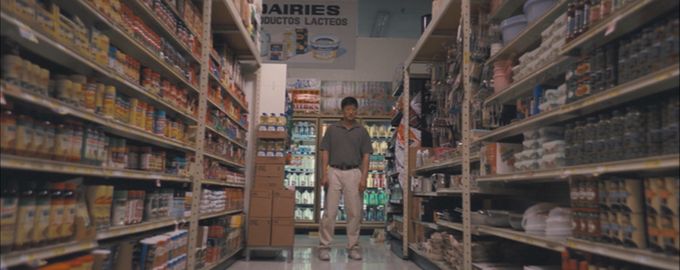
April’s Way is a short film about a Korean store owner struggling to protect his market during the 1992 Los Angeles race riots. The concept for the film spawned years ago, but it wasn’t until the Michael Brown shooting in Ferguson, the death of Freddie Gray in Baltimore, and the public outcry following both, that we knew it was time to make this script a reality. April’s Way is unique because it focuses on a Korean store owner, which is an often-overlooked storyline of the LA riots, and because it’s also based on a true story!
As soon we decided to move into pre-production on this, we knew 35mm anamorphic was, creatively, the right choice. Every reference image of the ’92 riots has a particular feel. What better way to recreate the 90’s, than to shoot on the predominant medium of that time period? Outside of a small project Robert and I were fortunate enough to shot on 16mm, we had very little familiarity with film. To overcome the uncertainty of working with 35mm, we relied heavily on the expertise of our supremely talented Director of Photography, Nicholas Wiesnet. Niko is very well versed in 35mm and jumped right on board as soon as Robert presented him with the project.
In terms of the gear, when we initially began the process of testing film stocks and testing packages, we had our sights set on using Panavision Hollywood as our vendor. Unfortunately, budgetary limitations necessitated that we went with another local vendor. The price comparison between the two was close, but we were trying to save every dollar that we could. In the end we went with the ARRICAM LT, but in hindsight, it might have been better to go with Panavision. Additionally, our steadicam operator operator was using the Steadicam M-1. We used the Arricam LT paired with Cooke anamorphic/i lenses. They were affordable and offered us the right assortment of primes for the shoot.
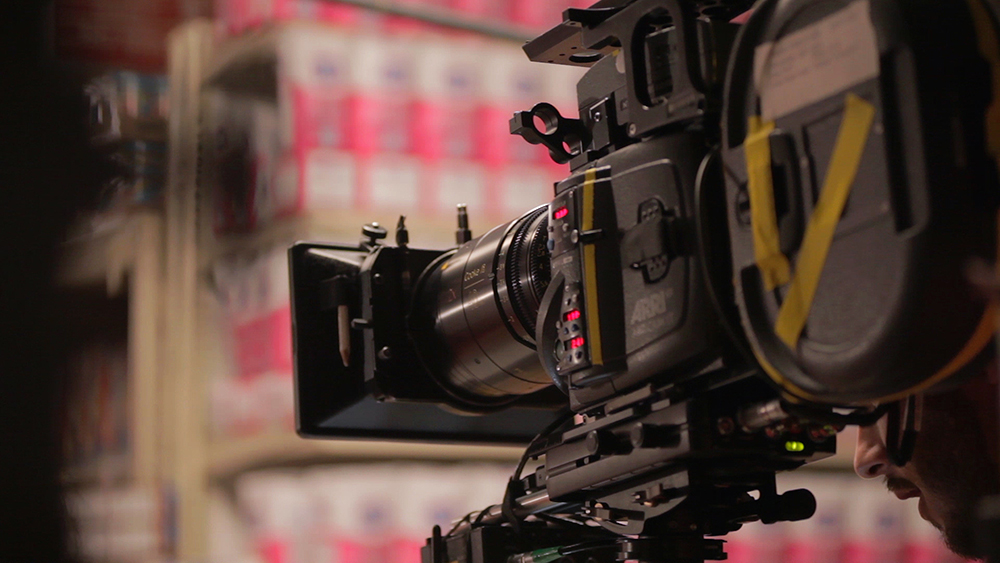
Our first major challenge came on our tech scout, which due to various scheduling conflicts, couldn’t happen until two days before production. Immediately entering the location, we spotted that the location had recently upgraded their overhead lighting to new LEDs. Very economical for the market, very dangerous for our film! We were terrified of possible shutter strobe.
With digital, we could’ve tested for any flicker on the spot. Or at the very least experimented with shutter adjustments or post solutions. It wasn’t feasible to obtain a film camera and rush process film to test. We could have possibly tested for the strobing with a DSLR or another digital camera, however, we weren’t keen on taking that risk because the results wouldn’t guarantee a film camera would respond the same way. Additionally, we did not want to sacrifice our shutter angle, which would drastically change the visual style we set out to achieve. Obviously, the easy thing would’ve been to change locations but we were firm on this particular one because it was a historical market that was Korean-owned and had actually burned down during the 1992 riots.
Our initial plan was to use the overhead lights and utilize a very small grip and electric package for subtle shaping and fills. Instead, we were forced into a completely different lighting approach – lowering the bounce ceiling with menace arms and speed rail and bouncing lekos. This drastically increased our grip and electric budget, as well as transformed our shot strategies at the last minute, but we couldn’t risk the strobing. Luckily, we always set aside some sort of contingency budget for all of the unknown issues that crop up during production.
Our next big challenge arose during the first night of production.
With the digital world, we’re used to relying on a video village for communication and for watching takes back before moving on. Hair, makeup and wardrobe can use a monitor to verify their work and most importantly, the director can ensure he’s getting what he needs. Due to budgetary restraints that prevented us from hiring a Video Assist, we knew going into the process of shooting on film that we would be without playback, and we accepted that. However, when we ran into major issues with the video out and wireless feed from the Arricam LT, we lost hours trying to sort through the technical issues.
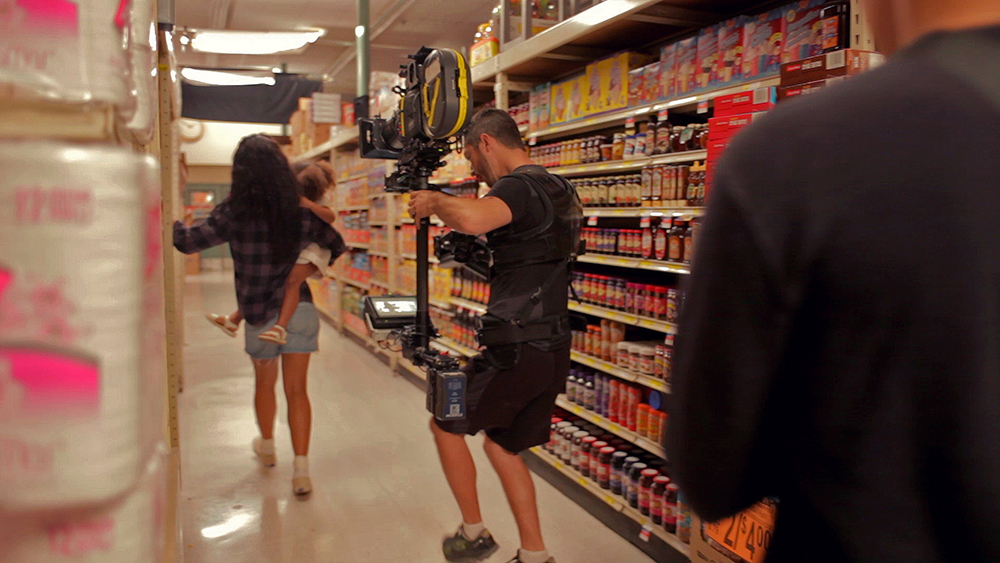
We first realized we had an issue when we ran our very first take of the day. The monitor blacked out and we couldn’t see anything while we were rolling. At first we weren’t sure what the issue was but after the camera team jumped in we learned that the video tape was to blame. If it wasn’t for our Steadicam operator, Neal Bryant, we might have gone the entire production without picture reference. Miraculously, Neal had an old analog Modulus and MK-V Hummingbird. It was small, but allowed us to move forward.
We were operating mostly on Steadicam for a lot of the takes, so it was was extremely inhibiting not being able to see an image while the camera was moving up and down the long grocery store aisle. That said, thanks to the solution from Neal, we were able to see something. However, it was an extremely low resolution, black and white, not-properly-de-squeezed representation. It was impossible to see if it was in focus or if there were any hair, makeup, or wardrobe issues. Additionally, the art department was trying to work with a very specific color palette and there was virtually no way to know how their choices were going to translate to the final image. It was frustrating, but we had no choice to move forward.
That wasn’t the only challenge though, as our revised G&E package, the initial vision of long sweeping takes, (featuring multiple hand-offs between characters, to really dial in the cinematic tension) had to be truncated down into more traditional coverage. We had a number of longer takes that we wanted to capture, but we knew it was more important to get the specific shots needed to tell the story than to try and continue on with the original vision. There was virtually no flexibility on set to be spontaneous and organic. Working with a faulty piece of equipment was extremely frustrating but we weren’t going to let that prevent us from telling this story.
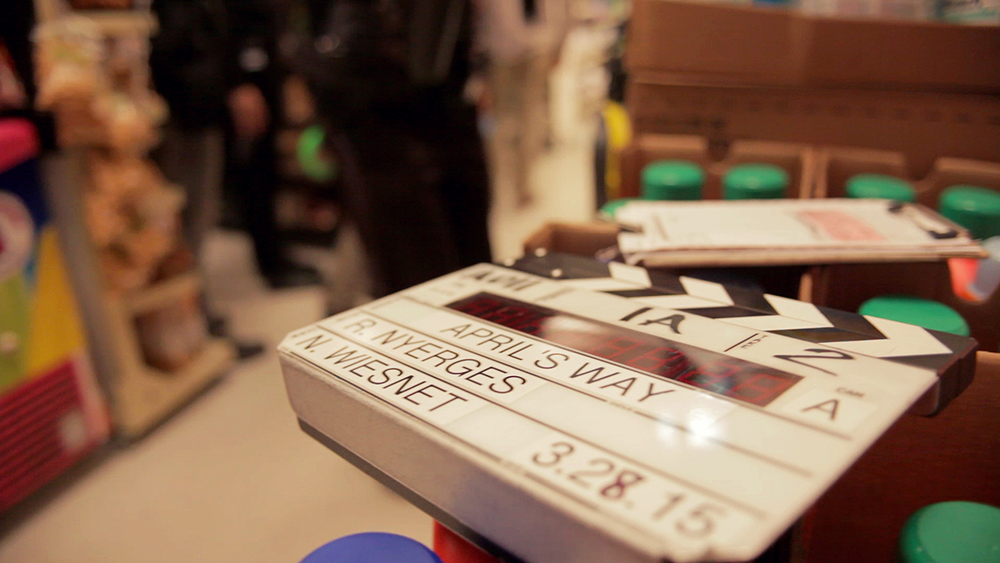
After wrap, we delivered our footage to Fotokem for processing. Presently, we have only received the roughest of scans for dailies use. We’ve cut the film and began other post work, but are very anxious to unlock the true potential of the effort we all put into capturing these images. It was always the plan to crowdfund this project after production was completed, which is unconventional. However, with with limited crew availability and topical events happening, like Ferguson and Baltimore, we wanted to act fast.
At this moment, we have a cut out to Ugo Sound for design and mix. We’re very excited about the possibilities here. Since our piece is entirely inside a market, sound design will be critical to establishing time and place and most importantly, exterior forces, which should really drive the tension. At the same time, our composer, Christoffer Franzen, of Lights and Motion, is drafting some really beautiful music, creating a sort of emotional roller coaster as we feel the tension, but then drop the audience into immediate sympathy.
We’re ecstatic to see all of these elements come together, but still feel incomplete until we give our Kodak 5230 the justice it deserves. Pending a successful fundraising campaign, our next steps include element scanning with SCANITY, proper DI and color grading, and creation of DCP’s for distribution to festivals. It’s essential to handle the film properly throughout the entire process to ensure the most cinematic experience possible. At the moment, we have only seen the low resolution dailies scan, which is muddy and washed out. With a 4k scan, we will finally be able to appreciate the cinematic look and beautiful texture of our film grain, as well as the sharpness from our Cooke Anamorphic-i lenses. We’re confident that ater proper processing, our film will be theater-quality and ready for projection at film festivals during 2016.
Having listed the stressful situations we’ve encountered and overcome, we still think 35mm film is a wonderful thing. It was an incredible experience, and forced us to work very efficiently and smartly on set. The archaic technology forced everyone to be on their toes, whereas with digital it’s easy to relax and let your guard down. Additionally, nothing compares to the cinematic look of anamorphic and film! Film was the perfect choice for April’s Way and we’re very excited to unlock the full beauty of it when we return to the lab for a full 4k scan.
We’re not done yet, but the biggest take away from shooting on film is the need for specificity. We knew going into this that we would have less freedom than a typical digital shoot. It was vital that our director story-boarded the piece so that everyone knew exactly what it was that we needed to accomplish for each scene. It was also important to be on top of time management. We knew with each take we were burning through our budget. Of course, you have to balance that between the time it might require to cut and reset if you’re on a tight schedule. It’s all about finding the right balance.
We’re currently in the middle of the Kickstarter campaign to finish the film, and saw crowdfunding as an opportunity to help make this project a reality. We’re no experts about the process itself, but there are a few insights we can offer, we’re seeing great progress by reaching out to the right people. It’s also important to know your audience, and not enough can be said about planning ahead. Make lists, schedule the days of your campaign, pre-compose emails, and have everything ready to go so that you’re not spending time away from your campaign at any point. You only have 30 days roughly, so it’s an 80+ hour per week type of job.
So please head to the link to support and share. Every little bit counts!
For more information, you can visit: www.aprilsway.com
Robert Nyerges / WRITER – DIRECTOR – PRODUCER
Just after graduating from Ohio University, Robert started working in the industry on the production staff of Hollywood feature films such as Lincoln, The Lone Ranger, The Wolf of Wall Street, and Interstellar. Robert cites that seeing the masters of cinema exercising their craft first-hand, the likes of Spielberg, Scorsese, Mann, Nolan, and Fincher, was a motivational and an awe-inspiring blessing. Since his time in production, Robert has produced a number of award-winning music videos and short films with his frequent collaborators of Nautico. Deciding to take his own directing career to the next level, Robert began studying with famed acting and directing coach, Judith Weston. Since then, Robert has directed a number of music videos and commercial spots.
Matt Hardman / PRODUCER
Since his time at Ohio University, where he teamed up with director Robert Nyerges, Matt has produced a number of award-winning short films and music videos. Most notable are, Death of the Cool, which won Best Short at the 2011 Sacramento International Film Festival, and Brady, which earned a Vimeo Staff Pick and was a Short of the Week. Matt’s practical set experience on televisions shows such as Ray Donovan, and Parenthood, as well as movies such as Lincoln, and The Lone Ranger, have helped him to advance his creative endeavors. He has also worked extensively in production, and post-production, on commercials for clients like Redbull, Toyota, Blue Origin, Rhapsody, and Samsung.
Nicholas Wiesnet / DIRECTOR OF PHOTOGRAPHY
Nicholas Wiesnet has photographed a number of feature films and his work on the Sci-Fi short film, The Drop, earned him an ASC Heritage Award nomination. Nicholas has also shot over 50 music videos for artists including Skrillex, Justin Bieber, 5 Seconds of Summer, Nico & Vinz, Birdy and Rick Ross.

Filmtools
Filmmakers go-to destination for pre-production, production & post production equipment!
Shop Now